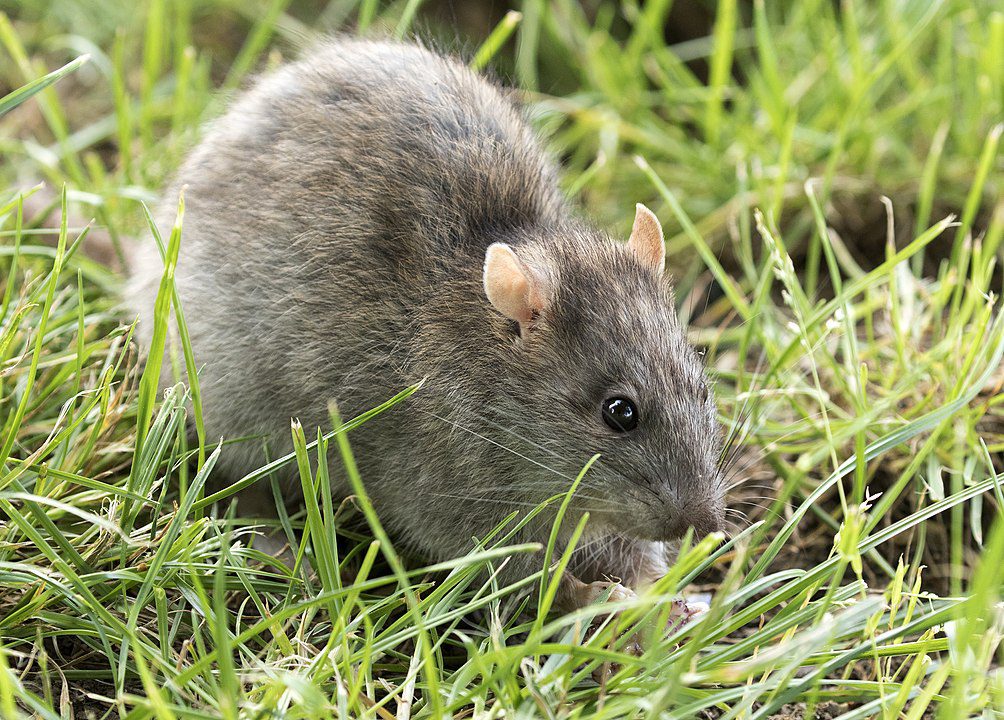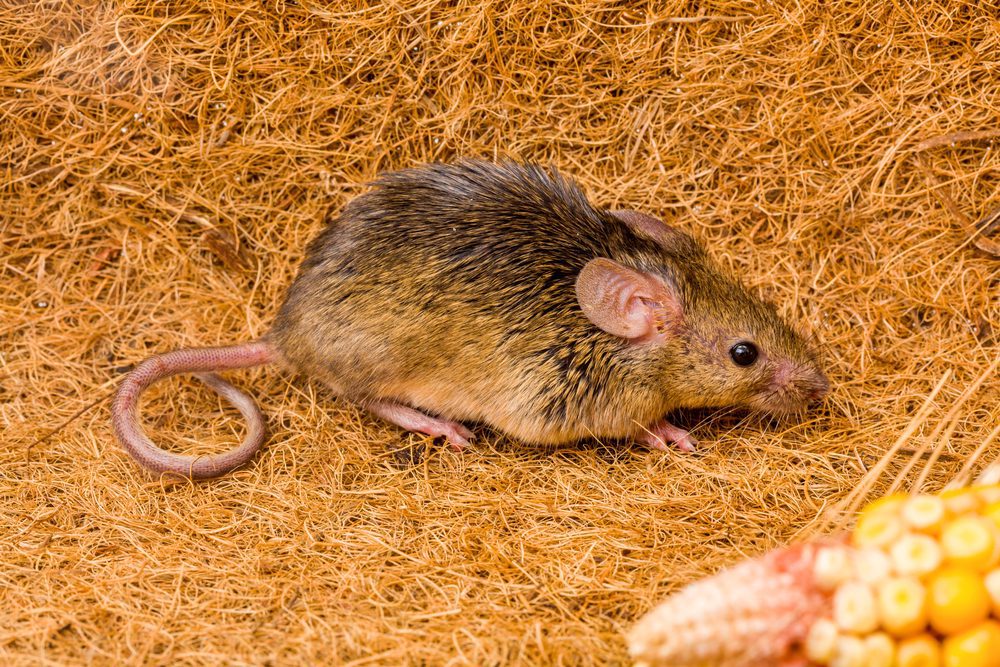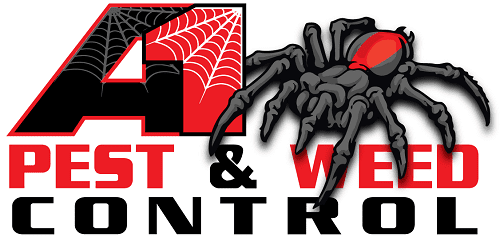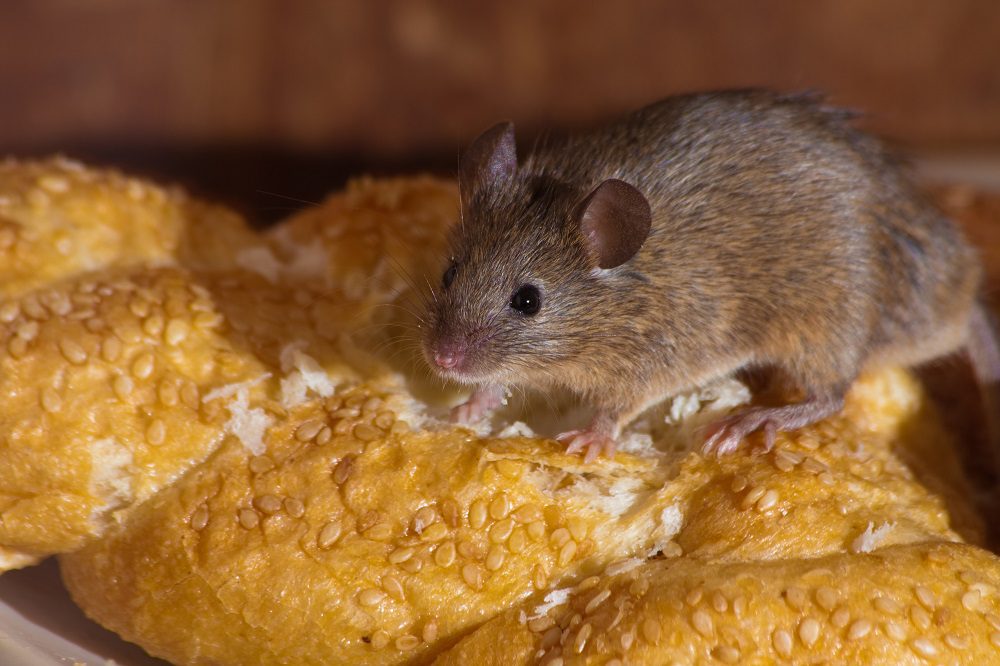Melbourne hosts a diverse range of rodent species, both native and introduced. With over 2,200 rodent species globally, representing over 40% of all mammal species, Melbourne has its fair share. Understanding the types of rodents in Melbourne is crucial for effective rodent control and management.
Melbourne’s rodent species include the native Bush Rat (Rattus fuscipes) and Swamp Rat (Rattus lutreolus), and introduced Black Rat (Rattus rattus), Brown Rat (Rattus norvegicus), also known as Ship Rat or Norway Rat, and House Mouse (Mus musculus). Introduced species thrive on human-generated waste and debris.
Rodent infestations in Melbourne pose health risks, as they carry diseases like leptospirosis, rat bite fever, and salmonellosis. They damage property by gnawing materials, potentially causing fires due to pipe and wiring damage. Accurate identification of rodents in Melbourne helps implement appropriate rodent prevention and extermination strategies, minimising rodent-borne diseases.
Effective Melbourne rodent removal and control needs understanding the behaviour, habitat preferences, and physical characteristics of each species. Familiarising with common rodents in Melbourne allows proactive steps to prevent infestations and protect health and property. For serious rodent infestation, seek a professional rodent removal service for safe, efficient handling.
Key Takeaways
- Melbourne is home to both native and introduced rodent species, including the Bush Rat, Swamp Rat, Black Rat, Brown Rat, and House Mouse.
- Accurate identification of rodent species is crucial for effective rodent control and management in residential and commercial settings.
- Rodent infestations can pose significant health risks and cause extensive property damage.
- Understanding the behaviour, habitat preferences, and physical characteristics of each rodent species is essential for prevention and extermination strategies.
- Professional rodent removal services can help deal with serious infestations safely and efficiently.
Introduction to Melbourne’s Rodent Population
Melbourne is home to diverse rodent species. Native rodents like bush rats and swamp rats have been part of the Australian ecosystem for millions of years. However, introduced species like house mice, roof rats, and Norway rats pose challenges.
Australia has over 60 native rodent species and three introduced pest species. Rodents are successful mammals, present on every continent except Antarctica due to their small size, short breeding cycle, and varied diet. Over 2,200 rodent species exist, with over 40% belonging to the Rodentia order.
Non-native rodents in Melbourne cause problems like competition with native species for resources, damage to property and infrastructure, and transmission of diseases to humans and animals.
- Competition with native species for resources
- Damage to property and infrastructure
- Transmission of diseases to humans and other animals
Norway rats have 5-6 litters per year, with 8-10 pups per litter. Roof rats have 4-5 litters per year, with 6-8 pups per litter. House mice have 6-10 litters per year, reaching sexual maturity at 6 weeks.
Understanding differences between native and introduced rodent species is crucial for effective rodent control and management in Melbourne. By identifying these species and their behaviors, we can develop targeted strategies to minimize their impact on our environment and protect our native wildlife.
Melbourne is experiencing a mouse plague, with experts warning of potential damage to crops and property. CSIRO notes perfect storm of weather, food availability, and timing has led to a surge in the mouse population. A single female house mouse can produce around 300 babies in her lifetime.
As Melbourne grapples with its rodent population, residents and businesses must take proactive measures for control and prevention. By working together and employing effective strategies, we can protect our city, native wildlife, and way of life from the negative impacts of introduced rodents.
Native Australian Rodents in Melbourne
Melbourne is home to several native rodent species. These native rats and mice play crucial roles. They are distinct from introduced species like Black Rat and House Mouse. Understanding the differences between native and non-native rodents is essential.
The most abundant native Rattus species in Victoria are Bush Rat and Swamp Rat. These have been present for millions of years. The first ‘pulse’ of rodents arrived 6-8 million years ago, ancestors of ‘Old Endemics’. The second ‘pulse’ arrived around one million years ago, ‘New Endemics’.
Bush Rat (Rattus fuscipes)
The Bush Rat has charcoal grey to black or light brown fur above, and cream or white below. It has a sleek coat with dense, soft fur and rounded ears. Bush rats prefer dense forest understorey and native plant shoots. They differ from Black Rats in shorter tails and body proportions.
Swamp Rat (Rattus lutreolus)
The Swamp Rat has a shorter tail compared to its body length. Unlike Black Rat with large, rounded ears, Swamp Rats have small, rounded ears. They prefer dense vegetation, avoiding urban areas compared to introduced species.
Water Rat or Rakali (Hydromys chrysogaster)
The Rakali is identifiable by its large size, gold-tinted fur, and long, white-tipped tail. It is adapted to aquatic environments and is an excellent swimmer near waterways and wetlands. This native rodent is important for Melbourne’s ecosystems.
Protecting native rodent populations maintains ecosystem balance. Understanding differences between native and introduced species allows for developing effective strategies to support natives while managing invasive species.
Introduced Rodent Species in Melbourne
Melbourne hosts several introduced rodent species. These invasive rodents arrived with European settlers. They adapted remarkably to urban environments. The three most common are the Black Rat, Brown Rat, and House Mouse.
Black Rat (Rattus rattus)
The Black Rat, or Roof Rat, is an agile climber. It’s often found in elevated areas like roofs and trees. It has a slender body, pointed snout, and large ears. Its tail is longer than its body.
Adult Black Rats weigh 200-300 grams. They can have 4-5 litters per year, with 6-8 pups per litter.
Brown Rat (Rattus norvegicus) (AKA Norway Rat & Sewer Rat)

The Brown or Norway Rat is larger and sturdier than the Black Rat. It has a thick, nearly hairless tail shorter than its body. Its snout is blunt. Brown Rats swim well and frequent sewers, basements, and low-lying areas.
Adult Norway Rats weigh 200-500 grams. They have 5-6 litters per year, with 8-10 pups per litter.
House Mouse (Mus musculus)

The House Mouse is the smallest introduced rodent in Melbourne. It has a slender body, pointed snout, and large ears for its size. House Mice adapt well, thriving in homes and commercial buildings.
Adult mice weigh 14-20 grams. They can have 6-10 litters per year, with up to 10 pups each. Mice can squeeze through 8 mm gaps, making exclusion difficult.
These invasive rodents challenge pest control. Their high reproduction, adaptability, and disease transmission risk public health and property damage. Effective management requires prevention, exclusion, and control tailored to each species.
Identifying Types of Rodents in Melbourne
Several factors help identify rodents in Melbourne. Observe behaviour, physical traits, and locations. This distinguishes rats and mice.
The Black Rat is an agile climber. It’s spotted in trees, fences, and roofs. It has a long, sparsely-haired tail and big ears.
Native rodents like Bush and Swamp Rats prefer dense forests. They have shorter tails and smaller ears than Black Rats.
The Brown Rat has a thick, nearly hairless tail shorter than its body. It has a blunt snout. The House Mouse is the most common. It has a pointed snout, large ears, and a long, thin tail.
Accurate rodent identification is crucial for effective control and minimizing impact on wildlife.
To identify rodents, note size, shape, tail length, ears, snout, fur, behaviour, and habitat. Consult pest control experts for guidance.
- Take note of the rodent’s size, body shape, and tail length relative to its body
- Observe the ears, snout, and fur characteristics
- Pay attention to the rodent’s behaviour and preferred habitat
- Consult with local pest control experts or wildlife organisations for guidance
Understanding rodent characteristics helps manage infestations while protecting wildlife. Seek professional pest control services if unsure.
Distinguishing Between Native and Introduced Rodents
In Melbourne, it’s vital to differentiate between native and introduced rodents. Native rodents like Bush Rats and Swamp Rats have lived in Australia for ages. Introduced species like Black Rats, Brown Rats, and House Mice have become pests.
Identifying rodents accurately and managing populations is crucial. Understanding behavioural differences and physical traits is key.
Behavioural Differences
Native rodents, like Bush Rats and Swamp Rats, are shyer than introduced ones. They prefer forest understorey and eat native plants, playing vital ecosystem roles.
Introduced rodents like Black Rats and Brown Rats are bolder. They adapt to urban areas, scavenging food and raiding pet supplies.
Physical Characteristics
The Black Rat has a long, sparsely-haired tail longer than its body. Its large ears help agile climbing and roof nesting.
Native Bush Rats have shorter tails than bodies. They have smaller, rounded ears and sleek, dense fur coats.
The Brown Rat has a thick, seemingly naked tail shorter than its body. Its blunt snout and 16-20 cm length distinguish it from Black Rats.
The native Water Rat is much larger at 620-1200 grams, with a 300-390 mm body and 230-320 mm tail lengths.
Knowing these behavioural and physical differences helps identify native and introduced rodents accurately. This enables effective rodent control while conserving native species.
Common Misconceptions About Melbourne’s Rodents
Many people have false beliefs about rodents in Melbourne. One myth is that all species found in Australia are introduced pests. However, native rodents like the Bush Rat and Swamp Rat have lived here for millions of years.
Another misconception is that all mice and rats are pests. While introduced species like the Black Rat and Brown Rat are invasive, native rodents play vital roles in the ecosystem.
Native rodents have evolved to inhabit various Australian habitats. They contribute to nature’s balance.
Misidentifying rodents is also common in Melbourne. Juvenile rodents are often mistaken for different species due to their small size. People may assume any small, brown animal is a rat.
This can lead to confusion between rodents and other small mammals like Antechinus.
To avoid these misconceptions, it’s crucial to learn about native and introduced species. Native Australian rodents have distinct features like tail length, ear shape, size, and position that differentiate them from Black Rats and Brown Rats.
By identifying these characteristics, we can appreciate the unique roles native rodents play in Melbourne’s ecosystems. We can also avoid perpetuating myths about rats and mice.
The Impact of Introduced Rodents on Melbourne’s Ecosystem
Non-native rodents like Black Rats, Brown Rats, and House Mouse disrupt Melbourne’s ecosystem. They compete with native species. They also spread diseases, impacting flora and fauna.
Competition with Native Species
Invasive rodents compete with natives for resources like food and shelter. They dominate urban and suburban areas. Native rodents like Bush Rats decline where invaders thrive.
Introduced rodents prey on eggs, young of birds, and small mammals. This predation leads to the decline and possible extinction of vulnerable species.
Disease Transmission
Introduced rodents carry, and transmit pathogens – bacteria, viruses, parasites. These cause human, and animal illnesses like leptospirosis, and salmonellosis.
Disease transmission risks public health, and native wildlife as the human population grows.
Addressing the issue needs public education, pest control, and native species conservation. Understanding rodent-wildlife-human interactions aids sustainable solutions for Melbourne’s biodiversity.
Rodent Control and Management in Melbourne
Effective rodent control and management in Melbourne requires different strategies. Prevention techniques and humane removal methods should be combined. With over 2,200 rodent species worldwide, including 60 native Australian species, infestations can damage homes, businesses and facilities. Professional pest control services in Melbourne provide expert advice and assistance.
Prevention Techniques
The key is prevention to manage rodents successfully. To minimise the risk:
- Seal entry points like gaps around doors, windows, and utility lines. Mice can squeeze through 8mm holes, and rats through 80mm openings.
- Store food in sealed containers. Keep kitchen areas clean, and free of crumbs and spills.
- Regularly clean up fallen fruits and seeds outdoors, as these attract rodents.
- Eliminate water sources like leaky pipes, and standing water in gutters or drains.
Humane Removal Methods
When removal is necessary, prioritise humane methods over poisoning to avoid harming non-target species. Live traps like cage traps or catch-and-release devices work for small infestations. Check traps frequently and relocate captured rodents far from residential areas.
For larger infestations, professional pest control services use integrated pest management techniques:
- Baiting with rodenticides like anticoagulants or other compounds in secure bait stations.
- Using humane removal methods like live traps or one-way exclusion devices.
- Modifying environments by sealing entry points and removing food and water sources.
When using rodenticides, follow safety precautions like wearing PPE, ensuring baits are inaccessible to children and pets, regularly inspecting bait stations, and notifying occupants about pesticide use. In Victoria, glue traps are prohibited due to animal welfare concerns.
Rodent control and management is an ongoing process requiring vigilance, prevention, and humane removal when necessary. By working with professional pest control services and implementing effective prevention techniques, home and business owners can minimise rodent infestations and protect human health and the environment.
Protecting and Conserving Native Rodent Populations
Safeguarding Melbourne’s native rodent populations is crucial. Nine out of twelve extant rodent species in Victoria are native to Australia. Three species are endangered, and two are vulnerable or near threatened.
The water rat, also known as Rakali, is an iconic native rodent. They can weigh 620 to 1200 grams with a body length of 300-390 mm. Their tail length is 230-320 mm. Water rats mark territories with scent.
To conserve native rodents, we must preserve their natural habitats. This involves protecting dense forest understorey and wetlands. By minimizing habitat destruction and fragmentation, we ensure native rodents have resources.
Controlling introduced predators like foxes and cats is key. These non-native species prey on native rodents. Effective predator control programs can reduce pressure on native rodents.
“Raising awareness about native rodents’ importance is crucial. Many people are unaware of their vital roles in our ecosystem.”
Research and monitoring programs track native rodent populations. Data on population dynamics, habitat preferences, and threats inform conservation strategies. Organizations like Wildlife Victoria research and protect native rodents.
By minimizing introduced rodents’ impact and supporting native species, we safeguard Melbourne’s native rodent populations. Ensuring these unique creatures thrive is our responsibility.
The Role of Research in Understanding Melbourne’s Rodents
- Research plays a crucial role in understanding Melbourne’s rodent populations.
- It focuses on ecology, behaviour, and population dynamics.
- This provides insights for management strategies and conservation efforts.
- Their research integrates fieldwork, genetic analysis, and museum specimens.
- This approach allows an understanding of rodents’ evolution and biogeography.
- A primary goal is assessing introduced species’ impacts.
- By studying interactions, threats can be identified.
- Targeted control methods minimise harm to native wildlife.
- Introduced rodents like Black Rats and Brown Rats compete with natives.
- They can also transmit diseases, making control crucial.
- Studies on population dynamics reveal factors influencing abundance.
- This knowledge helps predict and manage infestations.
- Research contributes to humane pest control strategies.
- Understanding behaviour allows targeted, low-risk control methods.
- The Victorian Department of Health provides guidance based on findings.
- Combining expertise and research aids native preservation.
- It controls pests and maintains urban ecosystem balance.
What to Do if You Encounter a Rodent in Melbourne
If you spot a rodent, determine if it’s native or introduced. Australia has over 60 protected native rodent species. If it’s an introduced species like Norway rat, roof rat, or house mouse, seek professional rodent control in Melbourne.
When dealing with rodents, prioritize humane treatment. Avoid methods harming non-target species. In Victoria, glue traps for trapping animals are prohibited. Contact wildlife rescue for sick or injured native rodents.
For effective rodent control, contact Dawson’s Australia. They offer comprehensive treatments with multi-dose bait powder for entry points and harborage areas. Their exclusive treatment includes a 6-month free service and is family/pet safe.
With rodent control calls spiking across Victoria due to plague proportions in some regions, promptly address rodent encounters to prevent infestations.
FAQ
Q: What are the most common types of rodents found in Melbourne?
A: The most common rodents in Melbourne include native Bush and Swamp Rats. Introduced species like Black, Brown Rats, and House Mice are also found.
Q: How can I tell the difference between native and introduced rodents in Melbourne?
A: Native rodents are shyer, prefer dense forests, and have shorter tails, and smaller ears. Introduced rodents are bold, often seen in urban areas, with long tails and large ears.
The Black and Brown Rats have distinct physical traits like thick, naked tails.
Q: What impact do introduced rodents have on Melbourne’s ecosystem?
A: Introduced rodents compete with native species for resources, leading to declines. They prey on eggs and young of native birds and mammals.
Additionally, they can carry and transmit diseases affecting human and wildlife health.
Q: How can I prevent rodent infestations in my home or business in Melbourne?
A: Seal entry points, keep food in sealed containers, and maintain cleanliness. Professional pest control services can provide advice and assistance.
Q: What should I do if I encounter a rodent in Melbourne?
A: First, identify if it’s native or introduced. Native rodents are protected and should not be harmed.
For introduced species causing issues, contact professional pest control. For sick/injured native rodents, contact Wildlife Rescue.
Q: Why is it important to protect and conserve native rodent populations in Melbourne?
A: Protecting native rodents is crucial for ecosystem balance. They play important roles, and conservation involves habitat preservation, predator control, and awareness.
Q: How does research contribute to understanding Melbourne’s rodent populations?
A: Research on rodent ecology, behaviour, and population dynamics informs management strategies and conservation efforts.
It sheds light on the impacts of introduced species and develops effective control methods to minimise harm to native wildlife.
Source Links
- Rodents Pest Control – health.vic.gov.au
- Types of Rodents in Victoria – gopestbendigo.com.au
- Mammals Chapter 8 – wildlife.vic.gov.au
- Melbourne’s Current Mouse Plague – dawsonspest.com.au
- https://www.wildlifevictoria.org.au/images/fact-sheets/18 – Native vs Non-Native FS.pdf
- Native and Introduced Rats – museumsvictoria.com.au
- Is it a Rat? – australian.museum
- Victoria’s Ecosystems – invasives.org.au
- Rodent Control – springer.com

